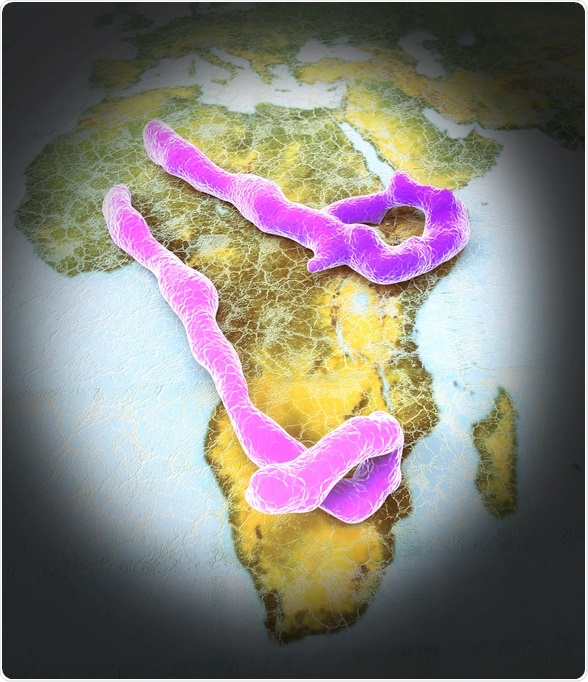Site Under Development, Content Population and SEO, Soft Launch 1st January 2020
Ebola virus, together with the Marburg virus, belongs to the family Filoviridae. Medical scientific community first encountered this viral family when Marburg virus appeared in 1967. During that time, laboratory workers with an unusual and severe disease were admitted to a hospital in Marburg, Germany. Subsequent investigation found that the immediate source of the virus were green monkeys imported from Africa that were used for vaccine research.

Those monkeys were also shipped to Frankfurt in Germany and Belgrade in former Yugoslavia. They were immediately euthanatized, and the epidemic was contained, counting a total of 31 human cases and one generation of secondary transmission to health care workers and their family members. Nevertheless, a high human mortality, unusual morphology of the virus and the failure to identify its natural history left many in fear, deeply concerned about potential future threats.
The humanity did not have to wait long for another threat to emerge. Ebola virus (second member of filovirus family) was first discovered in 1976 when two outbreaks of hemorrhagic fever occurred in two neighboring locations: first in southern Sudan and the other one in northern Zaire, later known as the Democratic Republic of the Congo.
The outbreak in Zaire infected 318 people with an extremely high mortality rate of 88%, while the outbreak in Sudan infected 284 people with a mortality rate of 53%. Medical centers were closed because of the high death toll among the health care staff, thus eliminating dissemination of infection through the use of unsterilized syringes and needles. The situation outside the clinics was controlled via segregation of patients in the affected villages through proven methods of quarantine.
In 1979 another epidemic occurred in Nzara of south Sudan. Reported number of human cases was 34, and mortality rate climbed to 65%. After that the Ebola virus has not been seen until 1994, when in the period of just three years five independent active sites of virus transmission were recognized. Those were Côte d'Ivoire in 1994, Democratic Republic of Congo in 1995, and Gabon in 1994, 1995, and 1996.
Alongside two previously known species Zaire ebolavirus and Sudan ebolavirus, a third distinct species was discovered during that period in Africa – Côte d’Ivoire ebolavirus (today known as Taï Forest ebolavirus). A source of the virus was an infected ethnologist that performed a necropsy on a chimpanzee while working in the Tai Forest reserve in Côte d'Ivoire.
In 1989, Ebola appeared in monkeys imported into a primate facility in Reston, Virginia, outside of Washington, DC. Epidemics in cynomolgus monkeys imported from the Philippines occurred in this and other facilities (namely Texas) through 1992, and recurred in 1996. Fortunately, no deaths among infected individuals were reported.
Epidemiologic studies conducted in connection with those incidents successfully traced the virus to one Philippine exporter, but were not able to detect the actual source of the virus. Political instability at that time hampered the attempts to work in the remote areas where the monkeys were captured. Today this virus species is known as Reston ebolavirus and does not represent a threat to humans, although it is very hazardous to primates.
Another big outbreak occurred in Masindi, Mbarara and Gulu districts of Uganda at the turn of the century (2000-2001), infecting 425 people and carrying a mortality rate of 53%. Most important risks associated with this outbreak were attending funerals of Ebola hemorrhagic fever patients, providing medical care to Ebola patients without using adequate personal protective measures and having contact with family members of the diseased.
Ebola hemorrhagic fever remained a plague for the population of Africa during the 21st century. Almost all human cases in that period resulted due to the emergence or re-emergence of Sudan ebolavirus in Sudan and Uganda, and Zaire ebolavirus in regions of Gabon, Republic of the Congo and the Democratic Republic of Congo.
Ongoing outbreak across Guinea, Nigeria, northern Liberia and eastern Sierra Leone that started in March 2014 is the largest one yet, often dubbed "the worst in history". The number of patients is constantly growing due to the on-going investigation; thus far it counts more than 2000 casualties with an estimated mortality rate of 50%.